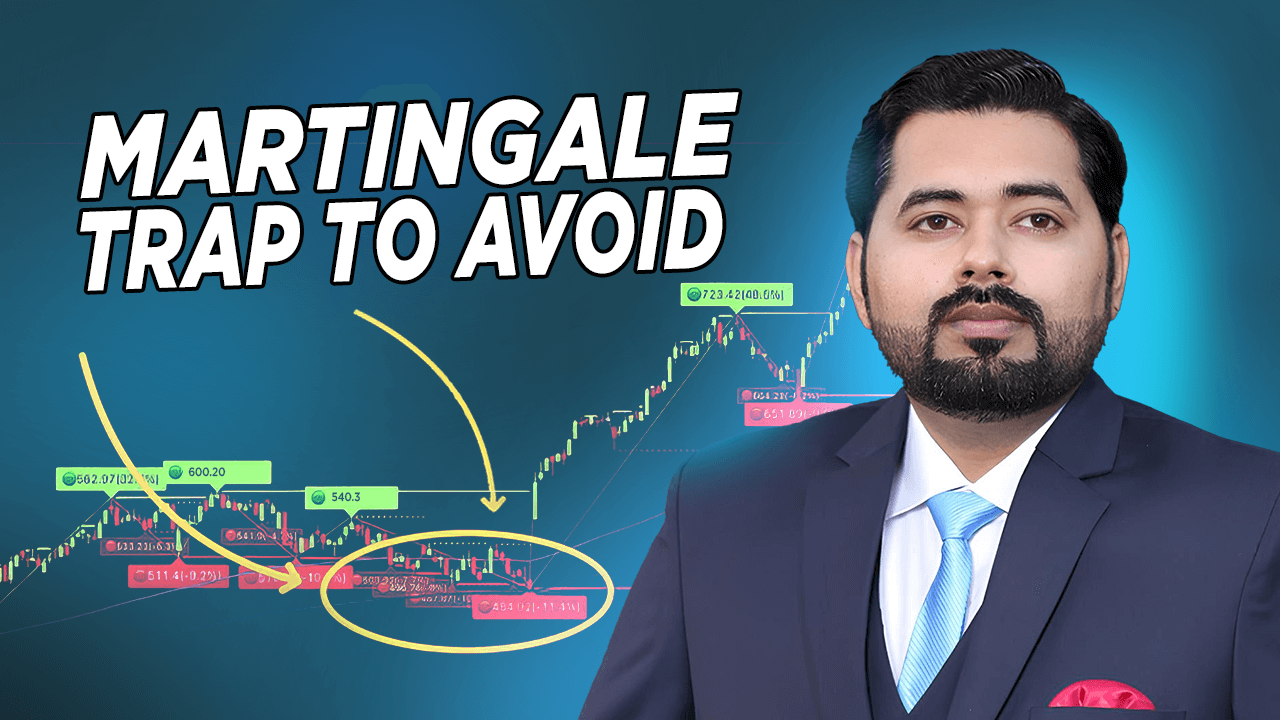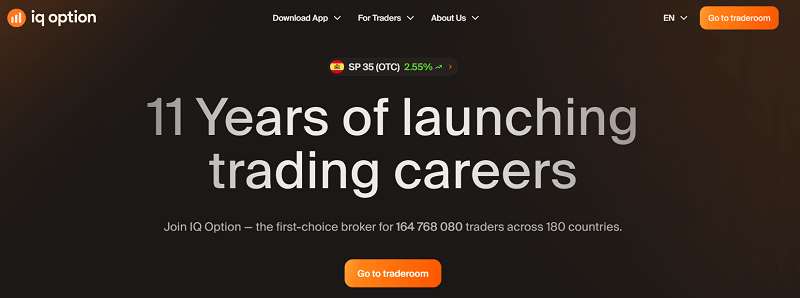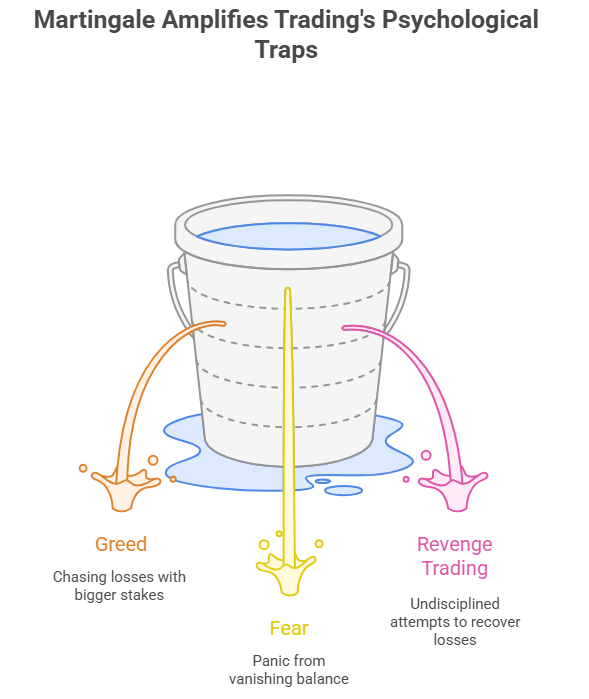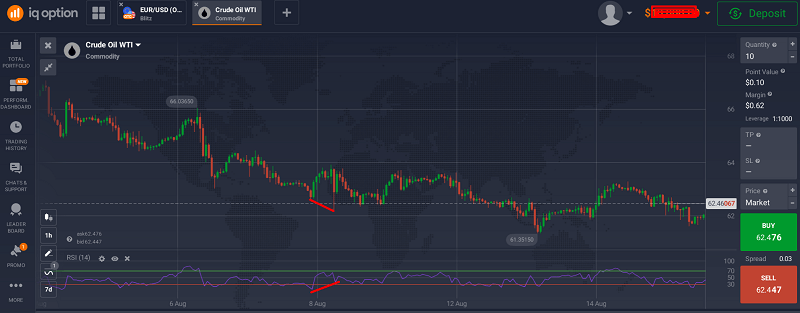Avoiding the Martingale Trap on IQ Option

My First Encounter With Martingale on IQ Option
When I first started trading on IQ Option, I stumbled upon countless YouTube videos and blog posts promoting the “foolproof” Martingale strategy. The logic looked so simple:
Lose one trade? Just double the next until you win. That way, one win recovers all previous losses plus a small profit.
It sounded like magic, and as a beginner, I wanted the fastest way to grow my balance.
I deposited $100 and started with $10 per trade. My first trade was a loss, so I doubled it to $20. The second was a win. Just like that, I had recovered the $10 loss and made an extra $8. I thought I had cracked the code.
But within two weeks, the cracks showed.
One night, I hit a losing streak; $ 10 turned into $20, then $40, then $80. Before I could even breathe, my balance had melted away. That’s when I realised: Martingale isn’t a “strategy” at all, it’s a trap.

👉 Start with a free IQ Option demo and test strategies safely.
Why Martingale Seems Attractive
On paper, Martingale looks appealing because of its simplicity. You don’t need advanced technical analysis. You don’t need to predict the market with high accuracy. You just keep doubling until the inevitable win comes.
The math is tempting:
- 1st trade: $10 → lose
- 2nd trade: $20 → lose
- 3rd trade: $40 → lose
- 4th trade: $80 → lose
- 5th trade: $160 → win (recover all + $8 profit)
In theory, this ensures you always end up in profit.
But the catch is obvious: you need an infinite balance. And no trader, not even professionals, has infinite money.
That’s why most IQ Option beginners fall into the trap. They see Martingale as a shortcut to riches, when in fact it’s a countdown to blowing the account. Understand the psychology of losses before using risk systems.
The Psychological Trap Behind Martingale
For me, the real danger wasn’t the math, it was the psychology.

Every time I lost, I felt an overwhelming urge to recover. Doubling down gave me the illusion of control. “The next one has to win,” I told myself. Don’t turn trading into a gambling cycle.
But markets don’t care about your last trade. A losing streak of 6, 7, or even 10 trades can and does happen. I once lost eight trades in a row on EUR/USD because I was trading during a choppy, news-driven session. My $10 trade would have ballooned to $1,280 if I had continued doubling. My $100 account never stood a chance.
This is how Martingale feeds the worst trading instincts:
- Greed – chasing bigger stakes after losses.
- Fear – the panic of seeing your balance vanish.
- Revenge trading – trying to “get it back” instead of trading with discipline.
It doesn’t just drain your balance, it drains your confidence.
👉 Try small trades on IQ Option with just $10 to practice risk control.
Real Example: My Martingale Sequence That Went Wrong
Here’s the exact sequence that wiped out one of my first IQ Option accounts:
- Trade 1: $10 → Loss
- Trade 2: $20 → Loss
- Trade 3: $40 → Loss
- Trade 4: $80 → Loss
- Trade 5: $160 → Loss
- Trade 6: $320 → Loss
At this point, my account was already liquidated. To win back, I would have needed $640 for the next trade. My $100 balance didn’t even cover half of it.
This is the hard truth: the strategy works only until it doesn’t. And when it fails, it wipes everything.
That one sequence taught me a lesson I never forgot, Martingale is designed for casinos, not for sustainable trading.
Why Martingale Fails in Real Trading
Martingale collapses under real-world conditions for several reasons:
Limited Account Size
A few losses in a row already multiply your trade size by hundreds. With a small account, you simply run out of balance.
Broker Restrictions
IQ Option (and most brokers) impose maximum trade sizes. Even if you had a huge account, you can’t double indefinitely.
Market Randomness
Unlike roulette, where odds are fixed, financial markets are dynamic. News, volatility, and trends mean you could face much longer losing streaks than expected.
Emotional Burnout
Even if you somehow survive financially, the stress of watching trades balloon is unsustainable.
These realities turn Martingale into a ticking time bomb. Try more controlled 1-minute trade setups.
More innovative Alternatives I Found Instead of Martingale
After blowing multiple balances, I finally shifted to strategies that rely on discipline and probability, not doubling bets.
1. Fixed Risk Per Trade
I now risk only 1–2% of my balance per trade. This means even after 10 losses in a row, I still have enough capital to keep trading.
2. Technical Setup Filters
Instead of unthinkingly doubling, I started trading only clear setups like RSI divergence, support/resistance zones, and candlestick confirmations.

3. Partial Take Profits
I learned to scale out, closing half my position early, locking profits, and letting the rest run. This reduced emotional pressure.
4. Win Streak Management
Instead of increasing after losses, I sometimes increase slightly after a winning streak. That way, I compound on success, not desperation.
My “Anti-Martingale” Risk Management Formula
To make it practical, here’s how I now manage trades on IQ Option:
- Start with a balance: $500.
- Risk per trade: 1% ($5).
- Max trades per day: 5–7.
- If I hit three consecutive losses, I stop trading for the day.
- If I hit +3 wins in a row, I increase size by 20% the next trade only.
This approach allows me to grow steadily without the all-or-nothing stress of Martingale.
Lessons I Learned From Quitting Martingale
Looking back, here are the key takeaways:
- Martingale gives short-term highs but guarantees long-term ruin.
- Trading is probability, not certainty. No strategy wins 100%.
- Discipline beats desperation. Stopping after losses is better than chasing them.
- The real edge is risk management. Even average strategies can win if risk is controlled.
- Use RSI divergence confirmations instead of doubling stakes.
The moment I stopped using Martingale was the moment my trading became sustainable.
Should You Ever Use Martingale?
Some traders argue that Martingale can work if you have a huge account and tiny starting bets. For example, starting with $1 on a $10,000 account.
But even then, you’re playing against time. Eventually, the streak comes that wipes everything. And when it does, months or years of gains vanish overnight.
So my answer is simple: don’t touch it. Use IQ Option as a trading platform, not a casino. Avoid emotional spirals caused by these five triggers.
A Smarter Way Forward on IQ Option
If Martingale tempts you, ask yourself: do you want adrenaline, or do you want consistency?
IQ Option offers powerful tools — indicators, alerts, demo accounts — that allow you to build a genuine edge. If you combine them with risk management, your balance won’t just survive — it can grow.
Final Thoughts
Martingale is the siren song of trading — seductive, promising easy wins, but hiding disaster beneath the surface. I learned this the hard way, blowing multiple accounts before I embraced more innovative money management.
If you’re serious about trading on IQ Option, don’t fall into the trap. Build discipline, learn setups, and let your edge compound over time. The market rewards patience, not doubling bets in desperation.
And whenever you feel tempted, remember my $100 account that disappeared in six trades. Don’t repeat my mistake.
👉 Open your account with IQ Option today and start trading with discipline!